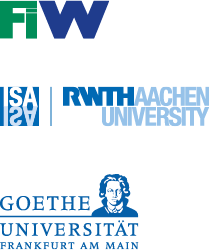SARS-CoV-2 viruses in wastewater: COVID-19 surveillance and assessment of potential infection risks
Wastewater-based epidemiology
Since the beginning of the pandemic, research groups have been working on methods to use the detection of SARSCoV-2 viruses in wastewater, to monitor COVID-19 infection levels in the population. The idea is simple: since infected people shed SARS CoV-2 viruses in their faeces, wastewater samples could provide information on the number of infections of all residents connected to a sewage treatment plant. If sufficiently sensitive, such analyses could serve as an early warning system for authorities to detect locally rising case numbers in the catchment area of a sewage treatment plant at an early stage.
A consortium of water researchers from Aachen, virologists from Frankfurt, ecotoxicologists and evolutionary researchers has been able to show for the first time in Germany, that SARS-CoV-2 genetic material can be detected in sewage treatment plants using modern molecular methods. Analyses showed 3 to 20 gene copies per millilitre of raw sewage in all nine sewage treatment plants sampled during the first pandemic wave in April 2020. This concentration level was also measured in studies in the Netherlands and the USA.
The researchers were astonished when older reserve samples from 2017 and 2018 provided signals, before the outbreak of the pandemic. After extensive method validation, it was clear that the gene primers used, not only detected SARS-CoV-2, but also other non-disease-causing coronaviruses in wastewater. The methodology now developed specifically for SARS-CoV-2 in wastewater was confirmed with gene sequencing.
The method can be applied in wastewater-based epidemiology: The measured virus load of a sewage treatment plant allows conclusions about the number of people infected with COIVD-19 in the catchment area. In the largest sewage treatment plant, 1037 acute cases were estimated in the catchment area with a virus load of 6 trillion (6 x 1012) gene equivalents per day, whereas in smaller sewage treatment plants with a virus load two orders of magnitude lower, 36 cases were estimated.
The sensitivity of this method is sufficient to serve as an early warning system to indicate, whether the action level of 50 incidences per 100,000 inhabitants has been exceeded. Former expectations to determine the number of unreported cases of infected persons not diagnosed in the laboratory, have not been fulfilled so far. However, the scientists believe that further improvements in the method are possible.
The SARS-CoV-2 fragments, identified in wastewater, turned out to be non-infectious in cell tests in vitro. However, due to high loads and low retention capacity of conventional wastewater treatment plants, the behaviour of SARS-CoV-2 in the water cycle needs to be investigated in more detail. The authors of the study are working on making their knowledge available for an early application of the methodology. To this end, close cooperation with ministries of health, ministries of the environment, sewage plant operators and professional associations is being sought.
The research team was formed by the non-profit Research Institute for Water and Waste Management at RWTH Aachen e. V. (FiW) and the Institute for Urban Water Management at RWTH Aachen (ISA), the Institute of Medical Virology at Frankfurt University Hospital (KGU) and the Department of Evolutionary Ecology and Environmental Toxicology at the Institute of Ecology, Evolution and Diversity at Goethe University Frankfurt and supported by six water associations in North Rhine-Westphalia, the LOEWE Centre for Translational Biodiversity Genomics (TBG) and the University of Saskatoon in Canada.
Publication:
Sandra Westhaus, Frank-Andreas Weber, Sabrina Schiwy, Volker Linnemann, Markus Brinkmann, Marek Widera, Carola Greve, Axel Janke, Henner Hollert, Thomas Wintgens, Sandra Ciesek. Detection of SARS-CoV-2 in raw and treated wastewater in Germany – Suitability for COVID-19 surveillance and potential transmission risks. Science of The Total Environment, available online 18 August 2020, 141750,





